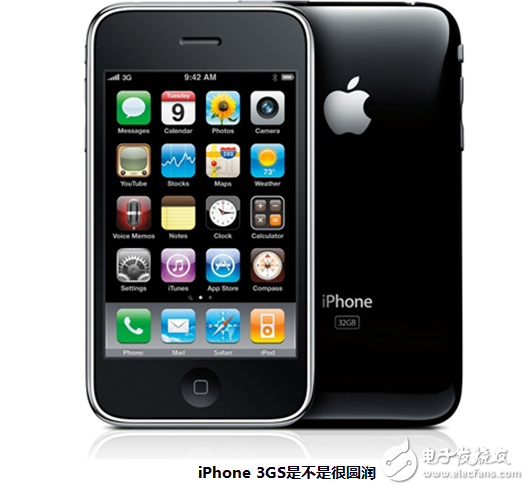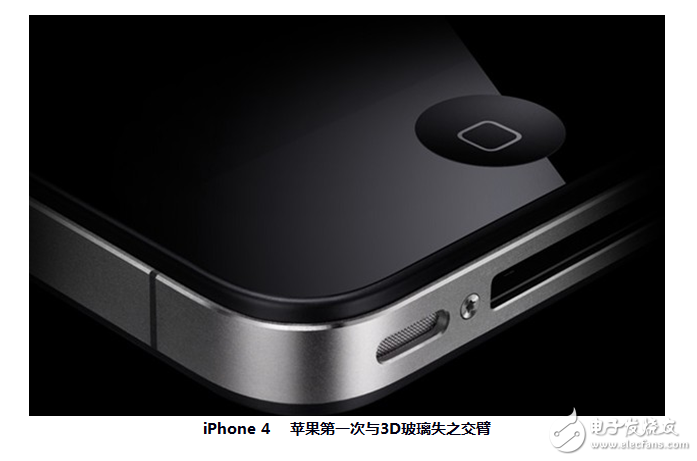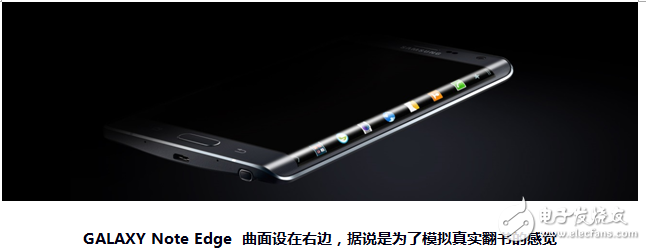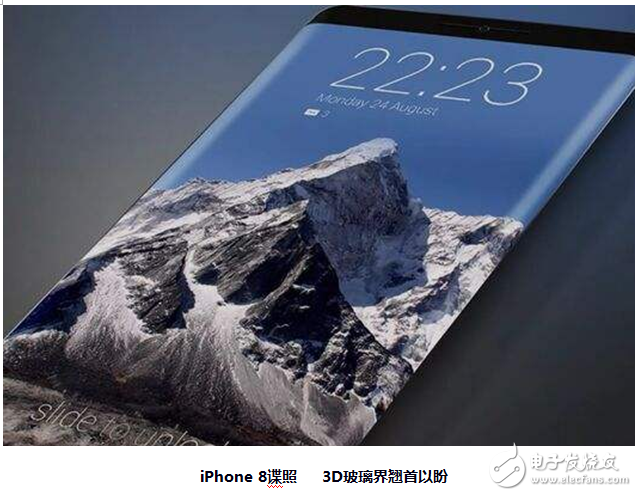In 2008, the non-planar concept of the display was pushed to the front of the screen by the scientific and technological circles, but there are few mature electronic products with 2D and 2.5D on the market. This situation did not change until Steve Jobs conceived the blueprint for 3D curved glass in February 2010. As early as 2500 BC in ancient Egypt and Mesopotamia, humans at that time began to make glass beads and small utensils through the ceramic mold method. How did the glass contact the mobile phone?
As early as the era of button function, Nokia's technicians found that as the display content increased, the area and resolution of the display increased, and the scratches on the screen not only destroyed the display effect, but also the structural protection of the display itself. It is vital. The industry has been rumored that on the eve of the release of the first generation of Apple's mobile phone, Jobs found that the phone and the key and other debris in the pocket, it is easy to scratch the screen of the phone, thus overturning the first generation of Apple phones using plastic lenses Mass production plan. In the month before the release of the first generation of Apple mobile phones, the person in charge of the Apple supply chain rushed to a watch lens manufacturer in Shenzhen, China for help, thus achieving Lansi Technology.
In 2008, the non-planar concept of the display was pushed to the front of the screen by the scientific and technological circles, but there are few mature electronic products with 2D and 2.5D on the market. This situation did not change until Steve Jobs conceived the blueprint for 3D curved glass in February 2010.

Major material manufacturers such as CORNING in the United States, SCHOTT in Germany, NEG in Japan, and AGC in Japan have successively developed glass materials suitable for mold-forming type, and continuously improve the problems of glass hardness and scratch resistance. When the world's fruit powder is looking forward to a cobblestone-like new generation of iPhone, on June 7, 2010, along with the slogan “Change once again, change everythingâ€, the stainless steel middle frame, the sharply defined iPhone 4 is known to the world. And led the mobile phone shell material from plastic to metal era, and the subsequent 5 is directly removed from the glass back cover and replaced by an all-metal chassis, this feature continues to the iPhone 7.

Structurally speaking, the stainless steel frame of the iPhone 4 is the core and skeleton of the entire mobile phone structure. The screen, battery board and other accessories are fixed on the frame, and the front and rear are equipped with glass, which makes the whole machine more visible than the sleek original design. The tough, sturdy, and simple beauty is perhaps the real reason why the iPhone missed 3D glass for the first time.
With the maturity of Samsung AMOLED flexible screen, Samsung released the first single-sided GALAXY Note Edge mobile phone in September 2014.

Later, the S6 edge, which was launched in March 2015, uses a bilateral curved surface. The curved glass is matched with the ultra-narrow bezel of LTPS AMOLED, which visually achieves a nearly borderless display effect. Apple's reTIna is also dwarfed. S6 edge will exceed 10 million in sales in the month of sale. According to statistics, the total shipment of smartphones equipped with 3D curved glass reached 170 million units in 2015. With the expansion of Samsung's flexible AMOLED production line and rising yield, in 2016, Samsung began to officially supply smartphone brands outside Samsung. In March 2016, vivo officially released Xplay5, which is a double-sided song. Xiaomi, Huawei, Glory, and Jinli also released 3D curved screen mobile phones in the same year. According to statistics, the global sales of 3D glass smart phones reached 255 million units in 2016. It is estimated that by 2019, 3D curved smartphones will account for 80% of the smartphone market.
At the end of 2016, Apple officially ordered 100 million AMOLED screens from Samsung, and the number increased to 160 million. The most direct manifestation of this exciting news is that more than 30 companies represented by Lansi, Bourne, Star Technology and BYD have increased or started to engage in 3D glass processing business, and are 3D glass related equipment and materials. Then entered the golden development period of 5 to 10 years. It is estimated that only one 3D glass hot bending machine will have a market value of 100 billion yuan.

With the release of the iPhone 8 approaching, the discussion of whether the iPhone 8 will use the curved screen is very rampant. According to the news from the Taiwan supply chain, "Apple believes that the curved screen can enhance the sense of operation of the finger at the edge of the screen and bring visual sense. No borders, but in the current limited production capacity of 3D glass cover, how cautious, utilitarian, and supply chain security is the top priority, how Apple views this issue, the answer will be announced at the product launch. Compared with Apple's consistent cautiousness, the mainland's 3C manufacturing industry is enthusiastic. A large number of CNC equipment companies have switched to hot bending machines. A large number of metal mobile phone casing processing companies such as Changying, Shengli, Kaisheng and BYD have invested in 3D glass processing. Line, and old glass processing companies such as Lansi Technology, Bourne, Ou Feiguang, and Keli are continuing to increase their investment in 3D glass technology and market. On the "International 3D Curved Glass Manufacturing Technology and Application Exhibition" to be held at the Shenzhen International Convention and Exhibition Center on November 24-26, 2017, Lansi Technology, Ou Feiguang, Ke Lishi, Shenyue Optoelectronics, Dongxu Group, Electric Glass AGC and Helitai will showcase their latest 3D glass products and technologies.
The combination of flexible display and 3D glass is the trend of the times. Not only in smart mobile terminals, curved glass has a broad market prospect in platforms such as wearable, VR and in-vehicle. With the completion of BOE, Tianma, Visionox, and Huiguang's flexible AMOLED production lines, the supply of AMOLED will break the monopoly of Samsung. The flexible AMOLED+3D curved cover will no longer be limited to the high-end machine market. The curved glass industry will usher in a more rapid development.
It is reported that the "International 3D Curved Glass Manufacturing Technology and Application Exhibition" was hosted by Reed Exhibitions and held on November 24-26, 2017 at the Shenzhen Convention and Exhibition Center Halls 1, 2 and 9. It is estimated that the total exhibition area of ​​the exhibition will exceed 60,000 square meters and more than 900 exhibitors will participate. The exhibits cover well-known Chinese and foreign companies in the industrial chain of 3D glass manufacturing and testing, measuring equipment and materials. Lansi Technology, Oufeiguang, Shenyue Optoelectronics, Dongxu Group, Kelizhi, Electric Glass, AGC, Helitai, Schott Glass, Spar Optics, Xinzhi Technology, Pagoda Optoelectronics, Global Tongchuang, Liande Automation, Ori Germany, Genesis, Suzhou Longyu, KOSES, Long-term, a large number of technologies, Shengwei, Yuanyang Xiangrui, Liande Automation, Yitian Automation, Baode Automation, Chengyu Equipment, Pingxian Optoelectronics, Yongquan Automation, Shenhong Hai, Lingdi Automation, Youmijia Automation, Putianda, Kejie Group, Genesis, Yuhuan CNC, Jingsheng CNC, Saibel, Yujing Machine, Jiashunda, Bohong, Xike Industry, Hairuiguang, Jing Japanese intelligence, priest measurement, Tianxing instrument, Sirui measurement (Hexex), Jiateng instrument, Ningbo nine vertical intelligence, Dazu laser, Ted laser, Shengxiong laser, Dongyuan machinery, excellent printing, Seiko ink, Lianda Chemical, Imperial Ink, Shijo, PPG, Jianxin, Feiner Chemical, Donglin Graphite, Sitong Heat, Xinghua Ssangyong, An Nai Electric, etc. will bring 3D glass related products to participate. The exhibition was held concurrently with the Shenzhen Touch and Display Exhibition. In addition to 3D curved glass related companies and professional visitors, it attracted more downstream buyers from global touch screens, displays, home appliances, tablet PCs, mobile phone solution design and consumer electronics manufacturing. . For the supplier of 3D curved glass industry chain, it has created a professional platform to maintain customer relationship, obtain sales leads, promote new products and establish corporate brand image.
Sfp Fiber Adapter,St Fiber Coupler,St Fiber To Ethernet Converter,Sfp To Sc Adapter
Ningbo Fengwei Communication Technology Co., Ltd , https://www.fengweicommunication.com
